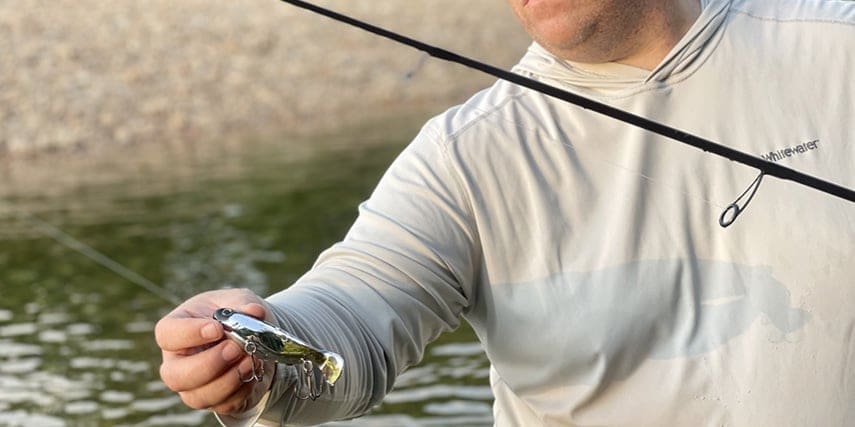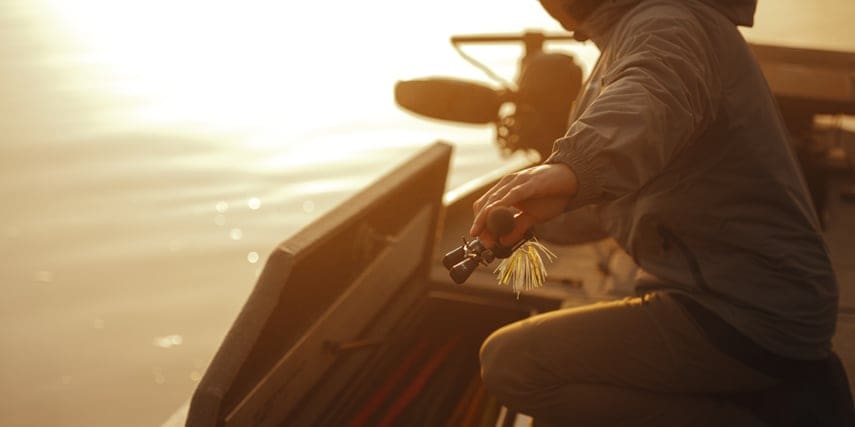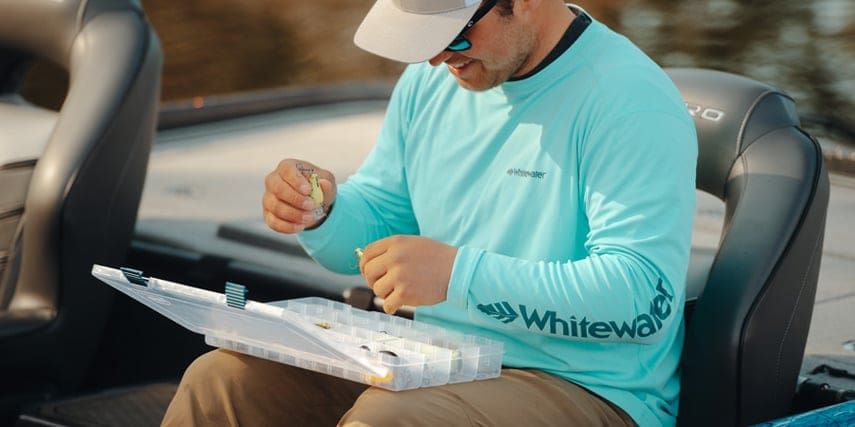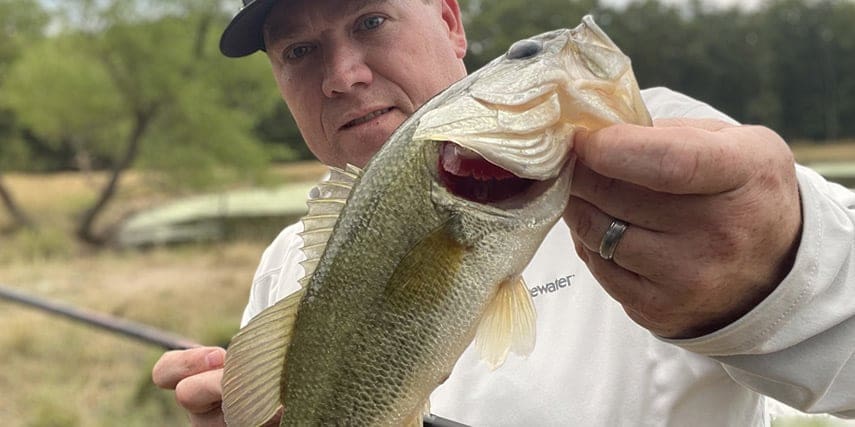Two predictable things happen when the peak of summer arrives and temperatures rise. The first is that fishermen lose some of their enthusiasm, and the second is that fish can become harder to find. Anglers take heart; it’s no big mystery. Fish either head for shade closer to the shore or into deeper water, which is much cooler. When fish make these transitional movements to keep cool, the fisherman simply has to follow. So pack the cooler with plenty of water, put on your sunscreen and Whitewater lightweight hoodie and keep fishing. Here’s a few favorite summertime lures you might try.

Top Water
When bass head for shade and cover, bass are often looking up. Try topwater lures that attract their attention and help pull them away from the cover.
The best topwater lures for bass depend on the time of day or night, the cover being fished, and the type of water being fished, be it a larger lake, river, or pond. When fishing lakes, the most common shady areas are often near docks or overhanging trees and bushes. A popular lure to fish near a shaded shallow cover is a topwater frog. To properly fish it, the angler typically casts the frog slightly past the target area, then slowly reels, pausing every now and then. Another tactic is to reel slower and twitch the rod tip to create a back-and-forth movement anglers call walking the dog. A topwater frog also works excellent when pond fishing during the hot summer. Ponds typically have heavier cover near the banks, often lily pads. Bass love to lay in the shallow shady water beneath the pads to stay cool. With the hooks tucked closely to the side of a frog lure, the angler can reel directly across the top of the cover without getting snagged. When reacting to a topwater frog, the exploding bite from a bass is a thrill for every angler.
When fishing around docks on the lake or deeper open water, anglers prefer a topwater lure with more movement. A larger lightweight topwater lure such as the Bill Lewis Shutter Step 4.0 provides much action on top of the water. When using topwater lures, anglers prefer a casting reel with a 7’ (or so) medium-heavy rod. A casting reel helps fishermen pitch or cast short distances with reasonable accuracy. When fishing in more open waters of the lake or when on rivers or ponds, the angler may switch to a spinning reel to have the ability to cast a lightweight lure a long distance, yet still fish shorter distances with the same setup.

I have recently been fishing on smaller rivers and ponds with my Favorite Fishing Sick Stick spinning reel and 7’1” medium-heavy rod. With the Sick Stick, I have been able to cast up the river with a reasonable distance and then work the topwater lure near overhanging trees and in the cooler spring-fed water where smallmouth love to stay during the hot summer. I have also recently succeeded on ponds by reeling a topwater lure along the edges of the cover to bring the bass out to bite.
Deep Water
When lake fishing in the middle of the hot summer, it is common to find bass in deeper water. It is not unusual for surface water temperatures to feel more like bath water during the middle of the summer. However, the water temps are much cooler around fifteen to twenty feet down, where bass will most likely be found. This layer of the water column where the water turns significantly cooler is called the thermocline. Because there may be less oxygen below the thermocline, bass and other gamefish can often be found right at the thermocline. Because the water density also changes, it’s often possible to see the thermocline on your boat’s fishfinder, if you have one. If you can see the thermocline is at say, 18 feet, find structure like weedlines, breaks, rocks, etc. at that 18-foot depth and you will often find a lot of bass and other game fish.

To successfully fish for bass in these deeper waters, anglers switch to lures that sink are dive quickly. Lures such as deep-diving crankbaits and swimbaits are excellent for finding and triggering bass that may be suspended near the thermocline or relating to structure that intersects the thermocline during the hot days of summer.
When fishing with deep-diving crankbaits, I have the best luck with bright-colored lures such as yellows, whites, and bright chartreuse colors that seem to get the attention and trigger bites from deep, aggressive bass. Using a longer, heavier rod and a casting reel with a higher pound fluorocarbon line allows the angler to cast heavier lures and reel fast. Having a higher gear ratio reel is essential to reeling these lures quickly enough so they can dive down to the strike zone fast. Speed and moving lures back and forth are crucial for triggering deep water bass to bite. If the quicker retrieve doesn’t work, anglers can also let their crankbaits rise and pause to imitate dying bait. By letting the lure slowly rise, trailing bass often strike once the lure starts moving again.
Swimbaits are another great way to reach deeper fish. There’s a wide variety of swimbaits, but it’s hard to beat a 3-4-inch soft plastic paddletail rigged on a ¼-5/8-ounce lead jighead. Cast past your target zone, count the lure down until it’s at the desired depth, then reel slowly.

Parting Words
There are plenty of fish to be caught throughout the dog days of summer. You just need to think like a fish and be in the right places – either shady near-shore areas or the deeper, cooler waters offshore. Brave the heat and be there with the right lures and you’ll have plenty of big bass pics that’ll make your buddies jealous.
